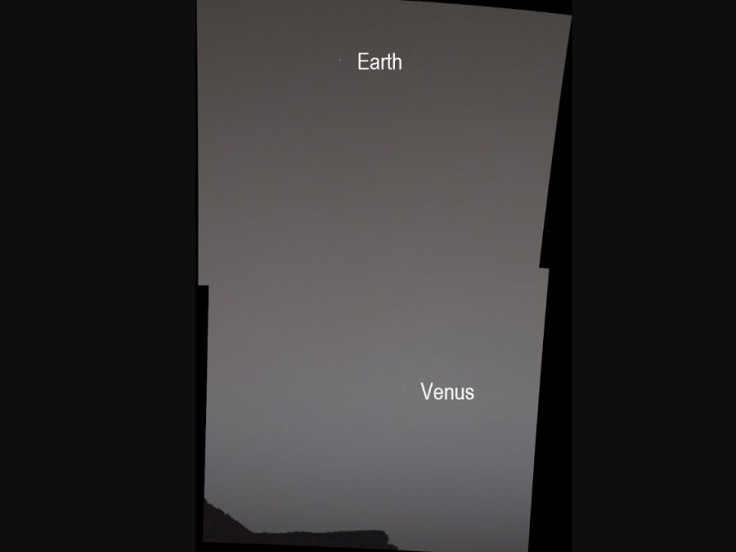NASA’s Mars Curiosity Rover Snaps Image Of Earth, Venus In Twilight Sky

KEY POINTS
- Mars' Curiosity Rover captured an image of Earth and Venus in the sky while stargazing
- Earth and Venus look like tiny pinpoints because of the dust in the air
- Soon, the Perseverance Rover will be on the way to join Curiosity on Mars
NASA's Curiosity Rover recently captured an image of Earth and Venus while stargazing from Mars.
On June 5, 2020, Curiosity Rover aimed its Mast Camera (Mastcam) at the sky around 75 minutes after sunset to take pictures. According to NASA, there is more dust in the air on Mars this time of year, making the twilight particularly bright, so the activity that day was partly meant to gauge the brightness.
Two of the images that Curiosity, on its 2,784th Martian day on mission, took were combined together in a panorama to show Earth and Venus looking rather like small pinpoints in the sky. Typically, Earth and Venus look like bright stars from Mars, but because of the dust, the two planets look just like small pinpoints.
"Even moderately bright stars were not visible when this image of Venus was taken," Mastcam co-investigator Mark Lemmon said, according to NASA. "Earth also has bright twilights after some large volcanic eruptions."
Curiosity Rover also shared an image of Earth in the Martian sky to celebrate Earth Day in April.
Looking up and thinking of you all back home. Here's what Earth looks like from my point of view on the surface of Mars.
— Curiosity Rover (@MarsCuriosity) April 22, 2020
Even though we're apart, we can still be together, online. Please join me in observing #EarthDayAtHome with these @NASA activities: https://t.co/5Sk4T2tpaZ pic.twitter.com/Zj7XTezLZt
Curiosity Rover has taken stunning pictures while on its mission, from passing asteroids to blue Martian sunsets. In late 2019, over the Thanksgiving holiday, it captured a 1.8-billion-pixel image of Mars that is its highest-resolution panorama of the planet yet.
How’s this for 2020 vision? Over the holidays, I took a series of high-res photos of my hometown on #Mars. This panorama is made up of a crisp 1.8 billion pixels. It’s my most detailed view to date.
— Curiosity Rover (@MarsCuriosity) March 4, 2020
Zoom in: https://t.co/F2VAjvAVVV pic.twitter.com/nTMhOTx2Di
So far, Curiosity is NASA's largest and most capable rover ever sent to Mars, and its main mission is to find whether the Red Planet ever had the conditions for past life. Later this summer, another rover will be on its way to explore Mars and to build on Curiosity's mission.
Called Perseverance Rover, it is targeted to launch within a window that opens July 2020 and arrive at the Red Planet by February 2021. Once on Mars, its main mission will take Curiosity's mission a step further by searching for actual signs of past microbial life. It will also collect Martian samples that a future mission will return to Earth.
Despite the setbacks and challenges the mission team had to face, especially because of the coronavirus pandemic, the mission appears to remain on track, with a Mars 2020 Perseverance Rover Launch Briefing scheduled for June 17.
© Copyright IBTimes 2025. All rights reserved.





















